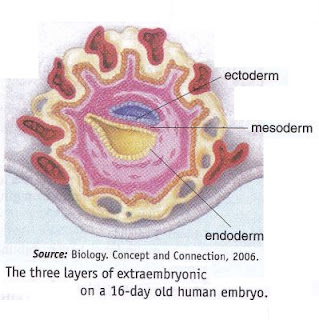The Differences Of Animal Ground Tissues
Sabtu, 13 Oktober 2012
1 Komentar
The Differences Of Animal Ground Tissues
Animal Tissue
All multicellular animal’s body is composed of four tissue, namely epithelial tissue, connective tissue, muscle tissue, and nervous tissue.
Structure and function of Animal Tissue
Animal tissue consists of cells and extracellular matrix. Based on the tissue structure and its principal function, we can distinguish the four animal ground tissue as shown in the follow table
Epithelial Tissue
The surface of the body or cavity of animal is covered by closely packed tissue and ranged in one or more layers. The tissue is known as ephithelium. Ephithelium is derived from one of extra embryonic layers of ectoderm, endoderm, or mesoderm.
- Epithelial Characteristics
- It is composed of cell and extracellular matrix which is necessary to bind the underlying tissue
- The cells vary depending on the function and location
- The surface does not connect to other tissues, whereas another surface connects to the underlying membrane.
- There is no material in between cell.
- It function as cover and gland.
- Some epithelium shows specialization, such as a bulk of tissue to enlarge surface, remove foreign particle, or for movement. The form of the specialization are microvilli, sterosilia, cilia, and flagella.


cytokeratin cocktail,Anti-Cytokeratin Cocktail monoclonal antibody can be provided from Creative Diagnostics.
BalasHapus